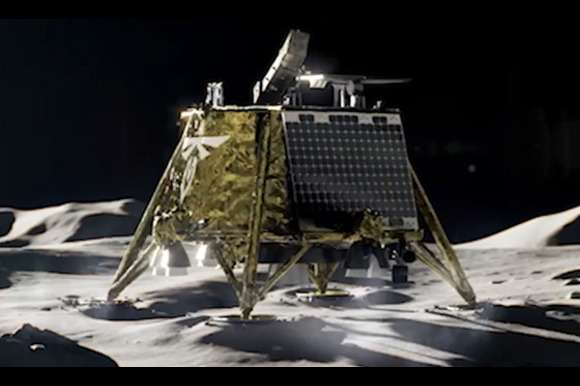Private space company Firefly Aerospace announced on Sunday the successful landing of its Blue Ghost Mission 1 on the lunar surface. This milestone represents the first fully successful commercial Moon landing in history, enhancing NASA’s collaboration with the private sector to promote lunar exploration.
“We have confirmation that #BlueGhost has successfully landed! Firefly has made history as the first commercial entity to achieve a fully successful Moon landing. This small step on the Moon signifies a significant advancement in commercial exploration. Congratulations to the entire Firefly team, our mission partners, and our @NASA clients for this remarkable accomplishment that sets the stage for future missions to the Moon and Mars,” the company shared on X.
Dubbed “Ghost Riders in the Sky,” this mission comes just over a year after the inaugural commercial lunar landing.
Journey to the Moon
The Blue Ghost lander, approximately the size of a compact car, was launched on January 15 aboard a SpaceX Falcon 9 rocket. On Sunday, the lander adjusted its lunar orbit before executing an uncrewed landing near an ancient volcanic vent on Mare Crisium, a basin located on the Moon’s side facing Earth.
Firefly’s mission is one of three ongoing lunar missions, alongside Japan’s ispace and Houston-based Intuitive Machines, both of which are making strides in the new space race.
Prior to the landing, Firefly Aerospace provided an update on the final descent phase, stating, “T-2 hours until #BlueGhost performs a Descent Orbit Insertion and begins its trajectory towards our final destination: the Moon’s Mare Crisium. This 19-second burn will occur on the far side of the Moon during a planned communications blackout. Once we regain signal approximately 20 minutes after the burn, our #GhostRiders will conduct a health check to ensure the path to Mare Crisium is clear.”
Objectives
The lander is equipped with ten scientific instruments, which include a lunar soil analyzer, a radiation-resistant computer, and an experiment designed to assess the viability of utilizing global satellite navigation for travel on the Moon. Additionally, Blue Ghost will document a lunar sunset, aiding researchers in comprehending the phenomenon of dust levitation influenced by solar activity, a phenomenon initially noted by Apollo astronaut Eugene Cernan.
This mission is in accordance with NASA’s strategy of collaborating with private enterprises for lunar exploration as part of the Artemis program. Firefly has obtained a $101 million contract from NASA for this endeavor. The lander is expected to function for 14 days before the extreme cold of the lunar night renders it inoperative.






